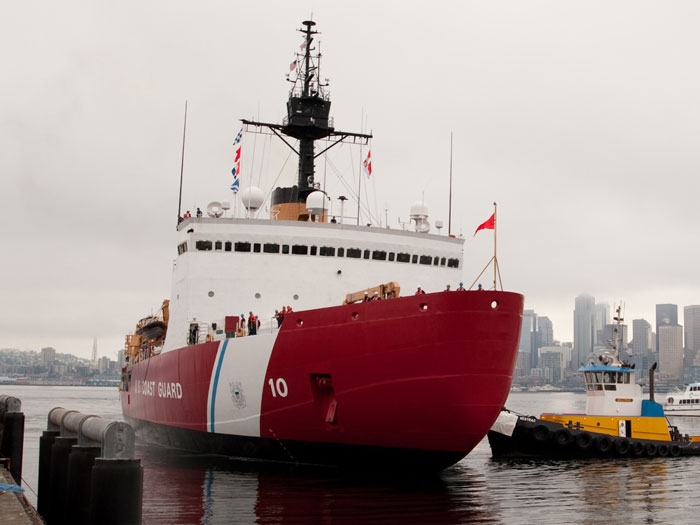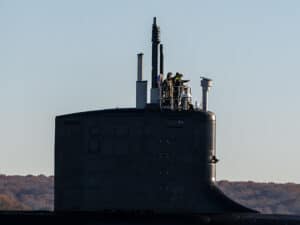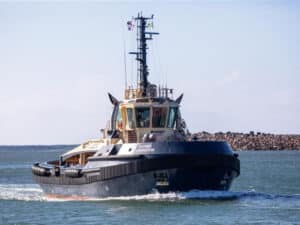
Polar Star joins Arctic rescue saga
Written by Nick Blenkey
Polar Star in Seattle
JANUARY 4, 2014 — The U.S. Coast Guard Cutter Polar Star is the latest icebreaker to get drawn into the saga that began Christmas Eve when the members of the Australasian Antarctic Expedition 2013-2014 found their chartered Russian vessel, the Akademik Shokalskiy, iced in in Commonwealth Bay some 1,500 miles south of Hobart, Tasmania.
The expedition’s 55 scientists and other passengers were rescued by a helicopter from the Chinese icebreaker Xue Long and transferred to the Australian Antarctic Division (AAD) vessel Aurora Australis. They are now aboard that vessel as it proceeds towards Australia’s Casey Base.
That leaves both the Akademik Shokalskiy and the Xue Long ice-bound.
Today the U.S. Coast Guard said that its Pacific Area Command Center received a request for the assistance of the Polar Star Thursday evening from the Australian Maritime Safety Agency (AMSA) after it had determined there was sufficient concern that the two ice-bound vessels might not be able to free themselves from the ice.
The Polar Star will now cut short its planned stop in Sydney to support the AMSA’s request for assistance.
“The U.S. Coast Guard stands ready to respond to Australia’s request,” said Vice Adm. Paul F. Zukunft, Coast Guard Pacific Area Commander. “Our highest priority is safety of life at sea, which is why we are assisting in breaking a navigational path for both of these vessels. We are pleased to learn the passengers of the Akademik Shokalskiy have been transported safely off the vessel. We are always ready and duty bound to render assistance in one of the most remote and harsh environments on the face of the globe.”
The Polar Star left its homeport of Seattle in early December on one of its primary missions, Operation Deep Freeze. The ship’s mission is to break a channel through the sea ice of McMurdo Sound to resupply and refuel the U.S. Antarctic Program’s (USAP) McMurdo Station on Ross Island.
The National Science Foundation manages the USAP, which coordinates all science research and related logistics in Antarctica and on the Southern Ocean. McMurdo Station is the logistics hub for NSF’s research. The Polar Star will continue on this mission after conclusion of the vessel assistance mission.
This is the first time since 2006 that the Polar Star has made this journey. It has recently completed a three-year, $90 million overhaul, which the Coast Guard says will allow it to continue its missions into the foreseeable future. For more than 50 years, Coast Guard icebreaker crews have deployed to Antarctica in support of Operation Deep Freeze. They will again assist by creating a navigable shipping lane through the layers of sea ice in McMurdo Sound permitting delivery of critical fuel and supplies needed to operate the U.S. McMurdo and South Pole stations throughout the coming year.
The Polar Star is the U.S. Coast Guard’s only active heavy polar icebreaker. The ship is 399 feet in length. Its maximum speed is 18 knots, it is able to continuously break six feet of ice at three knots, and is able to break 21 feet of ice backing and ramming. The Polar Star is specifically designed for open-water icebreaking with a reinforced hull and special icebreaking bow.
The Polar Star will leave Sydney Sunday after taking on supplies prior to its voyage to Antarctica. It is anticipated it will take it approximately seven days for the Polar Star to reach Commonwealth Bay, dependent on weather and ice conditions.





Leave a Reply
You must be logged in to post a comment.